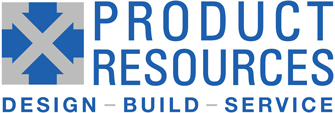The most obvious output from the manufacturing process will be your product – your finished product.
As you think about your product though, think about everything that comes with the product – as it is delivered to the end-user.
Defining your finished product
As typically described in the Bill of Materials, picture your product sitting in place (e.g., on a bench or table), perhaps connected to other equipment, a network, or a power source. That vision skips over some important considerations.
Things that ship with the Product – here is a list of example items that complete a product. Not all these items ship with any one product, nor is this list exhaustive, but it is presented here to help you consider the material and information that may be required to help your customer get the product installed and operational.
- Ancillary Material – if there are power cords, mounting hardware, external plumbing hardware, laptop computers, interconnecting cables, etc., these should be identified and packed with the product.
- Installation, Operation, Service and Maintenance Manuals – some of this documentation is necessary even for the simplest of products. In some cases, it is convenient that these manuals be on-line so that the latest manuals are always available. Where written documents are preferable, they should be treated like any custom part for the product – they need a set of procurement documents and time to have them professionally printed, bound, and packaged. From a schedule standpoint, a draft version of the Installation and Operation Manuals must be ready when the regulatory reviews are started because a review of the manuals for proper safety information is required.
- Quick-Start Guide – whether you have printed manuals or not, a Quick Start guide will be appreciated and will offer an outline of how to get the product running. It would also be the place to document the URL where the real manuals can be found.
- Packing List – if the product has many parts that the customer needs to get it going, it is helpful to print a list of the parts that are in the box so that the customer can find and identify them. It will give them confidence that all the parts were shipped in case one or more parts are still hidden in the packaging.
- Certificate of Quality and Calibration – instrumentation may require a specific certificate that can be used to document the calibration status of the instrument.
- Certificate of Conformance – this certificate is used to certify that the product has gone through a designed process and has passed all aspects. Some customers insist on having “C of C” documentation as part of their acceptance criteria. It depends on the market for the product.
- Warrantee Registration Card – these cards have a reputation to get the customer on a mailing list, so add a data privacy statement. They are also useful as a tool to notify the customer of any issues or updates that may be required.
- Consumable materials – if there are any consumable or wear items with the product, consider shipping an initial supply of these items and instructions on ordering more. For many medical devices, the consumables are the business.
